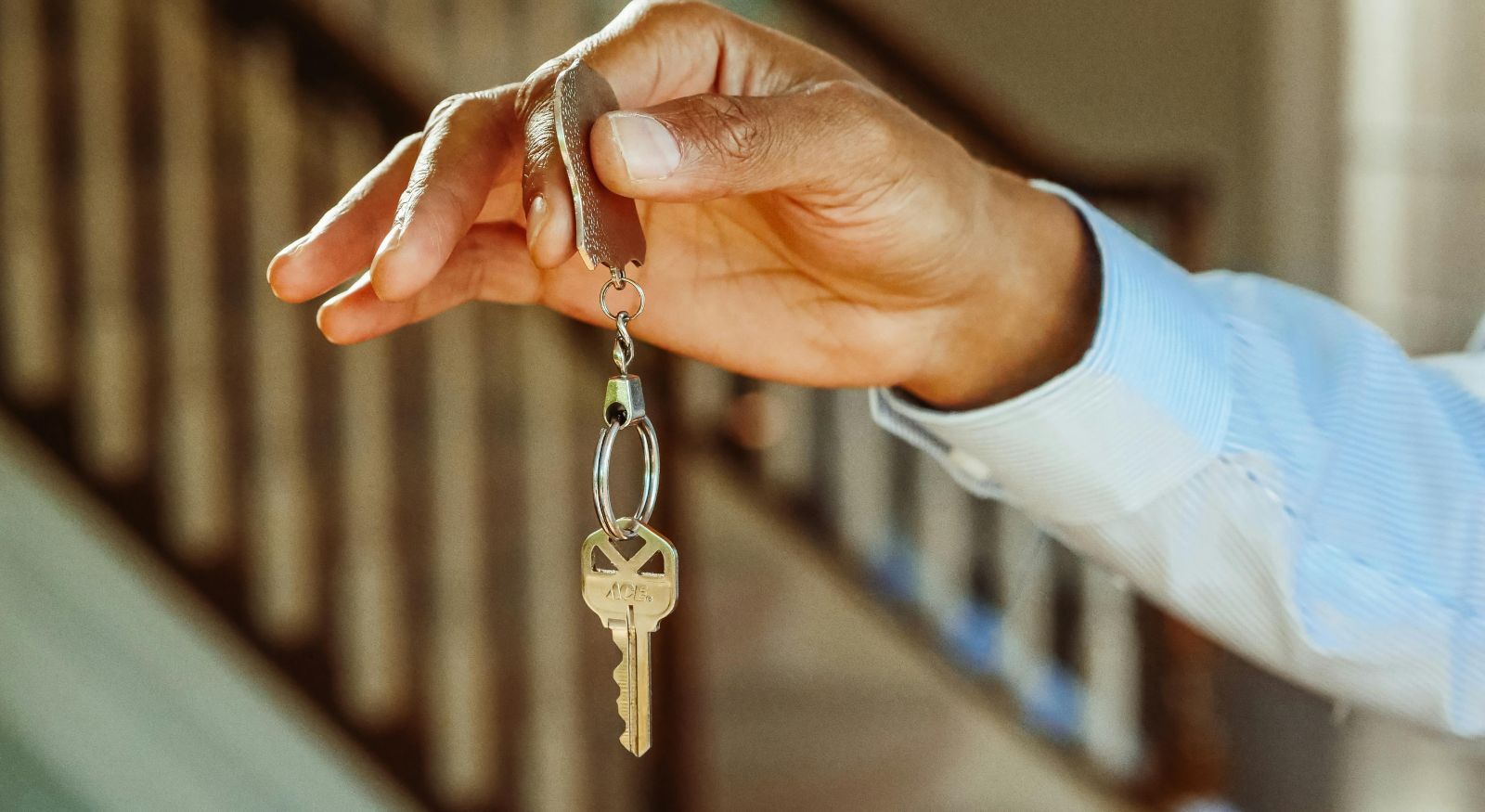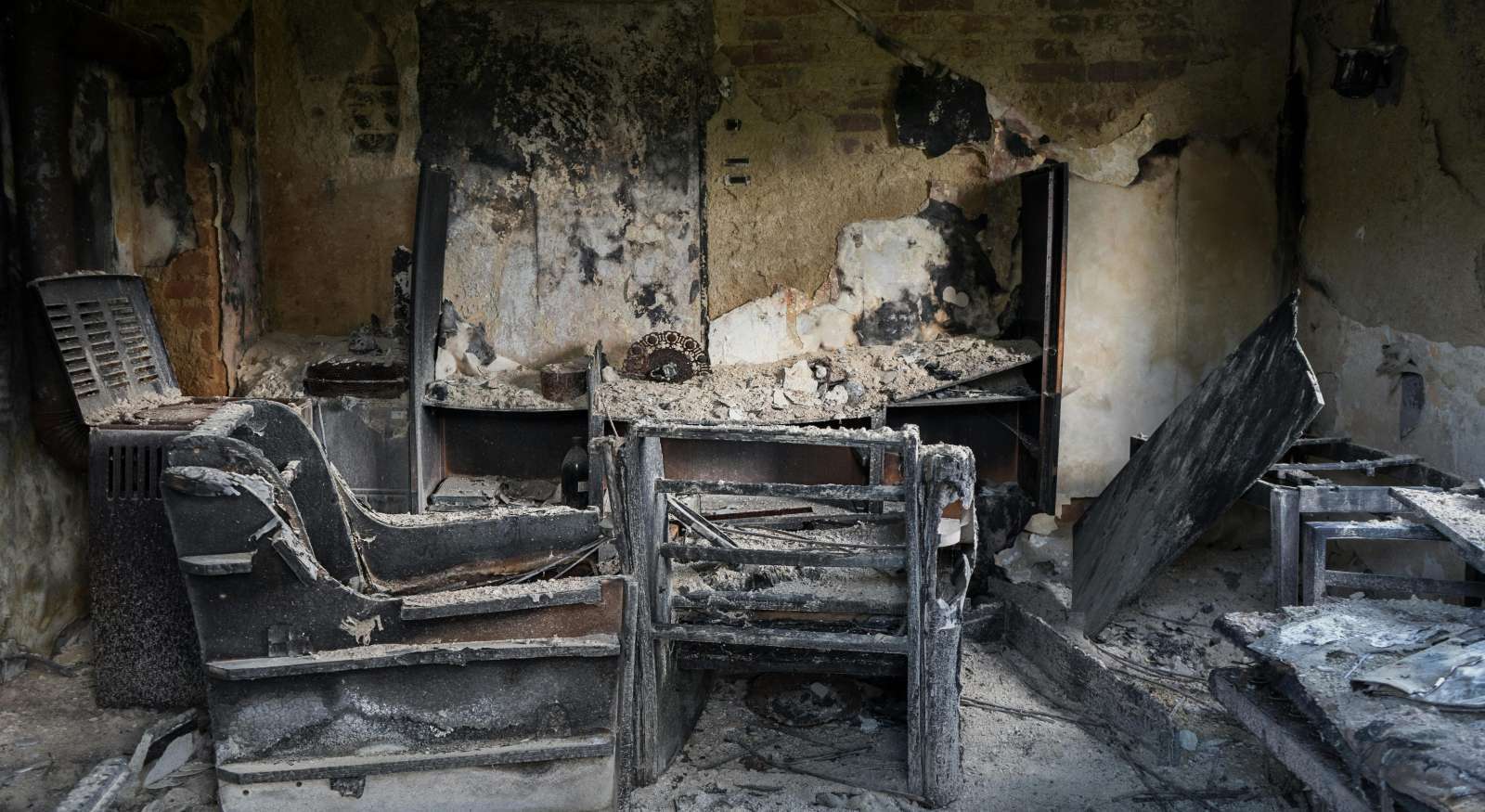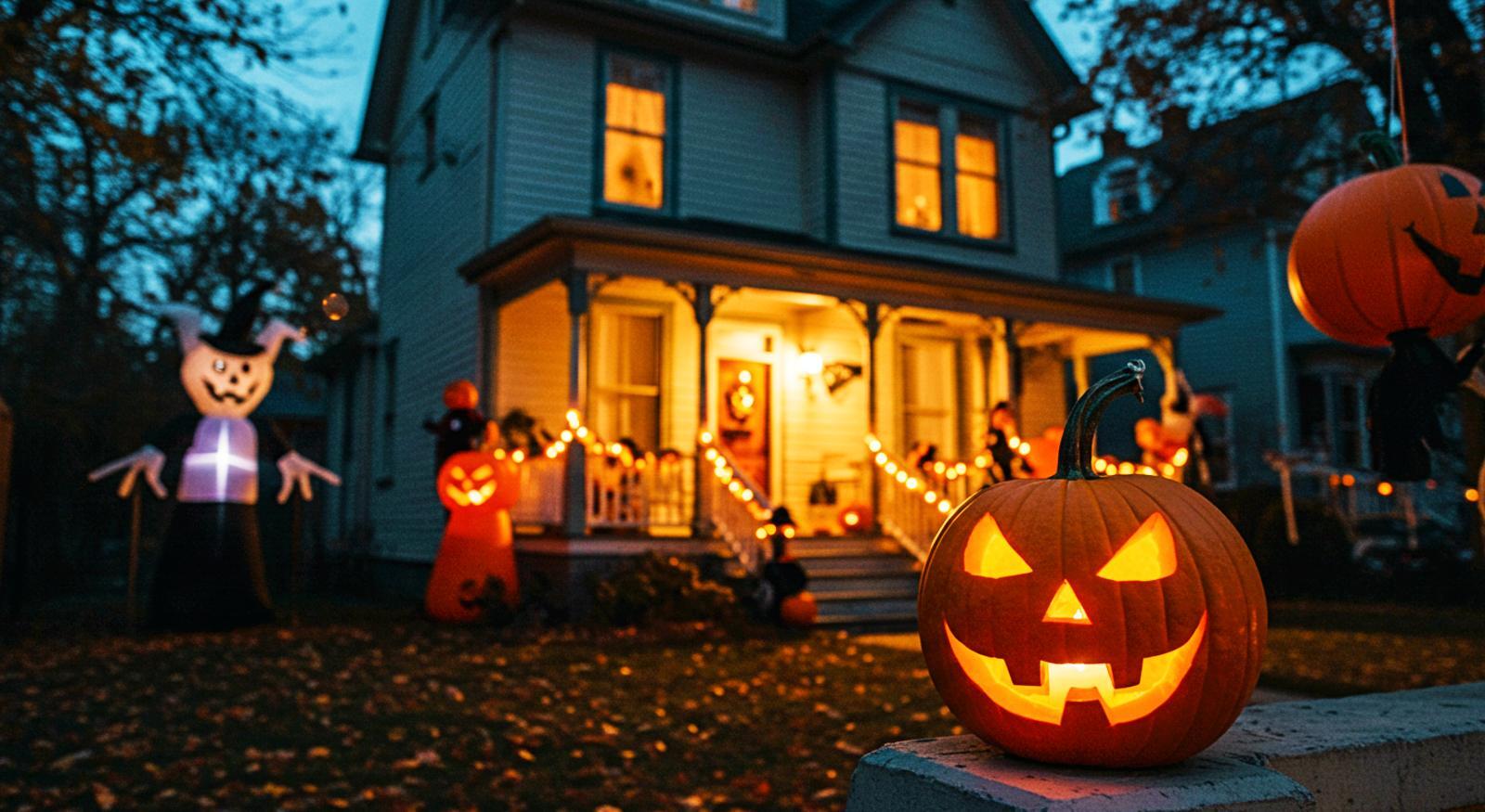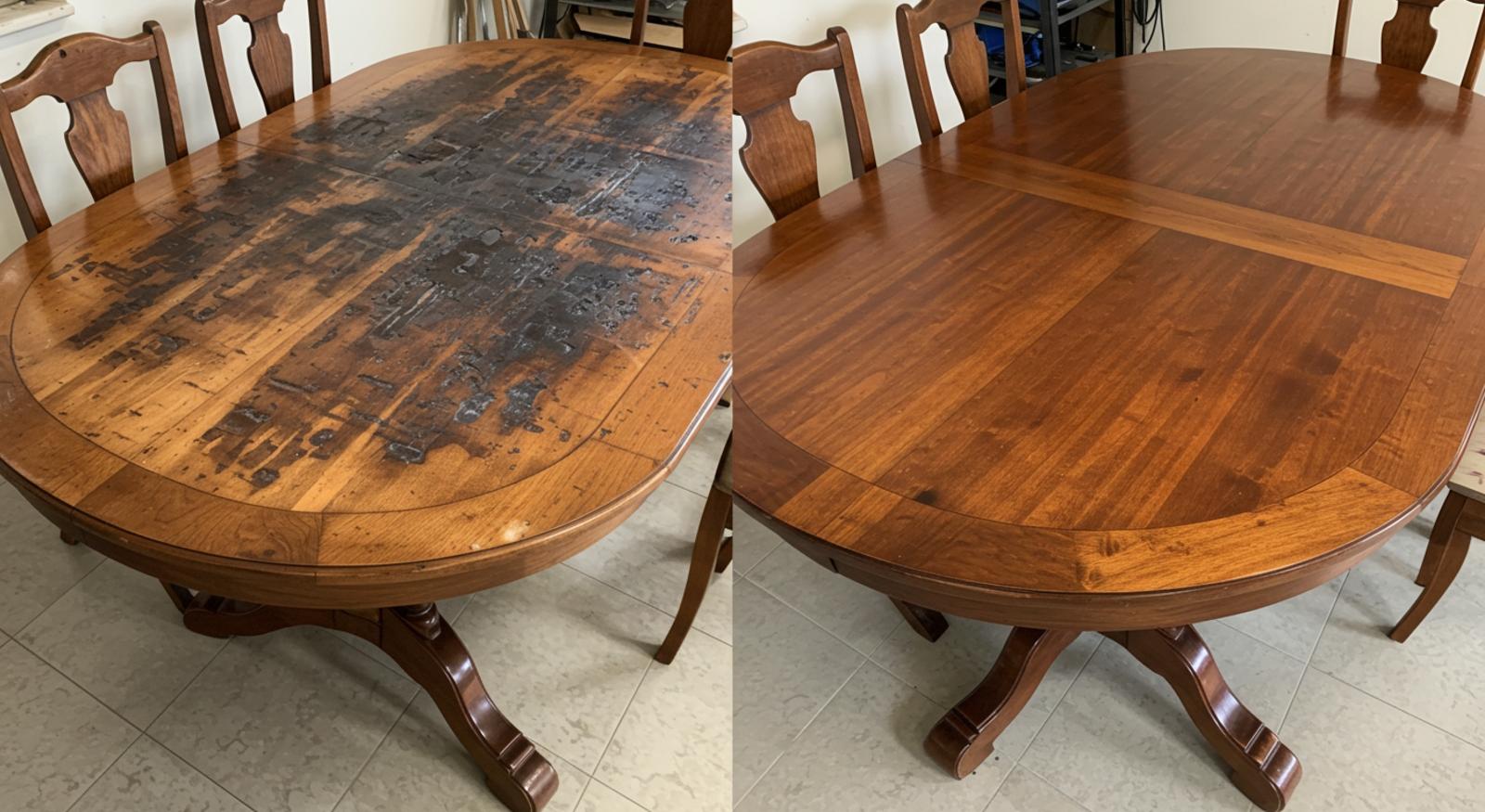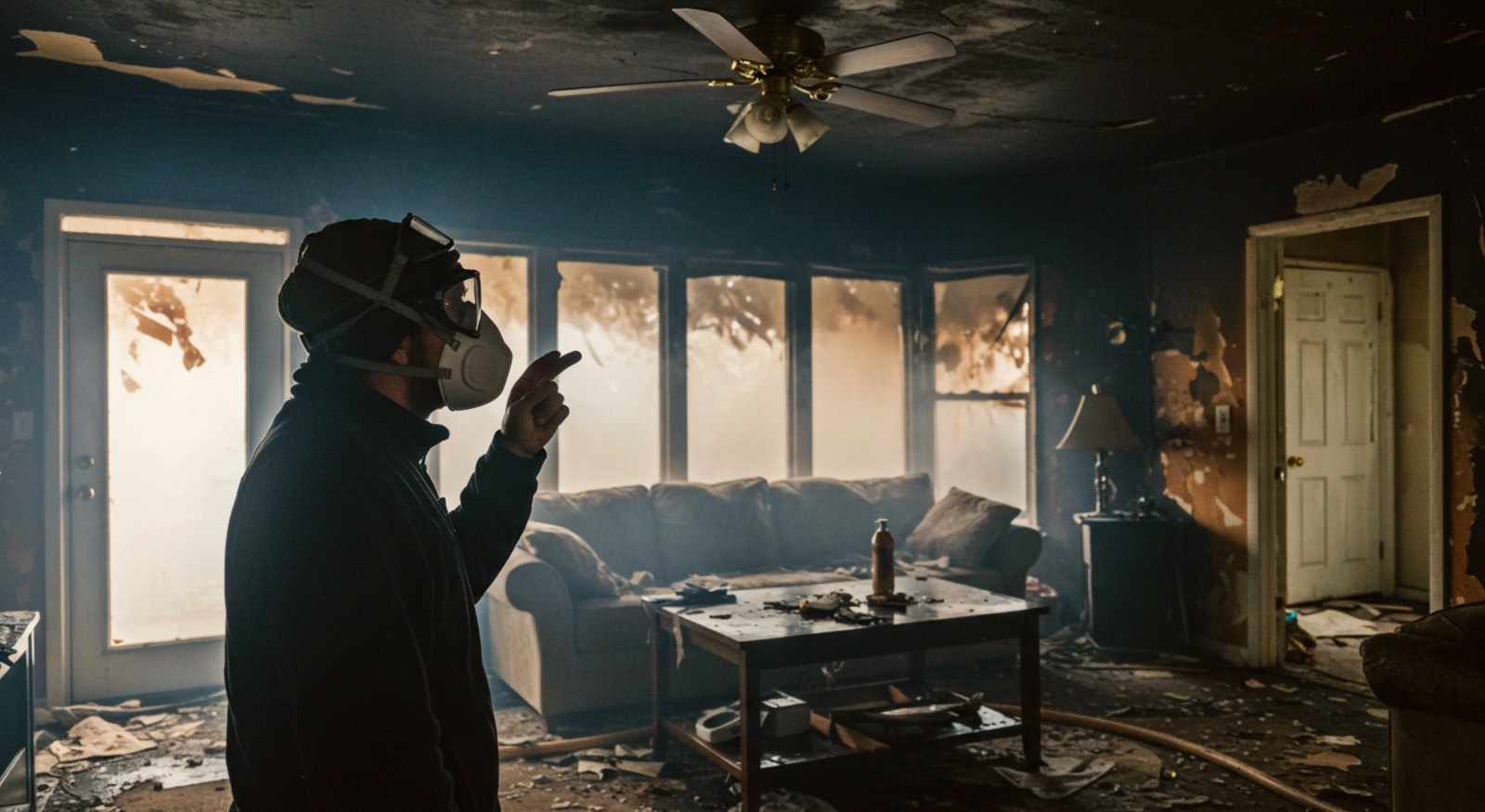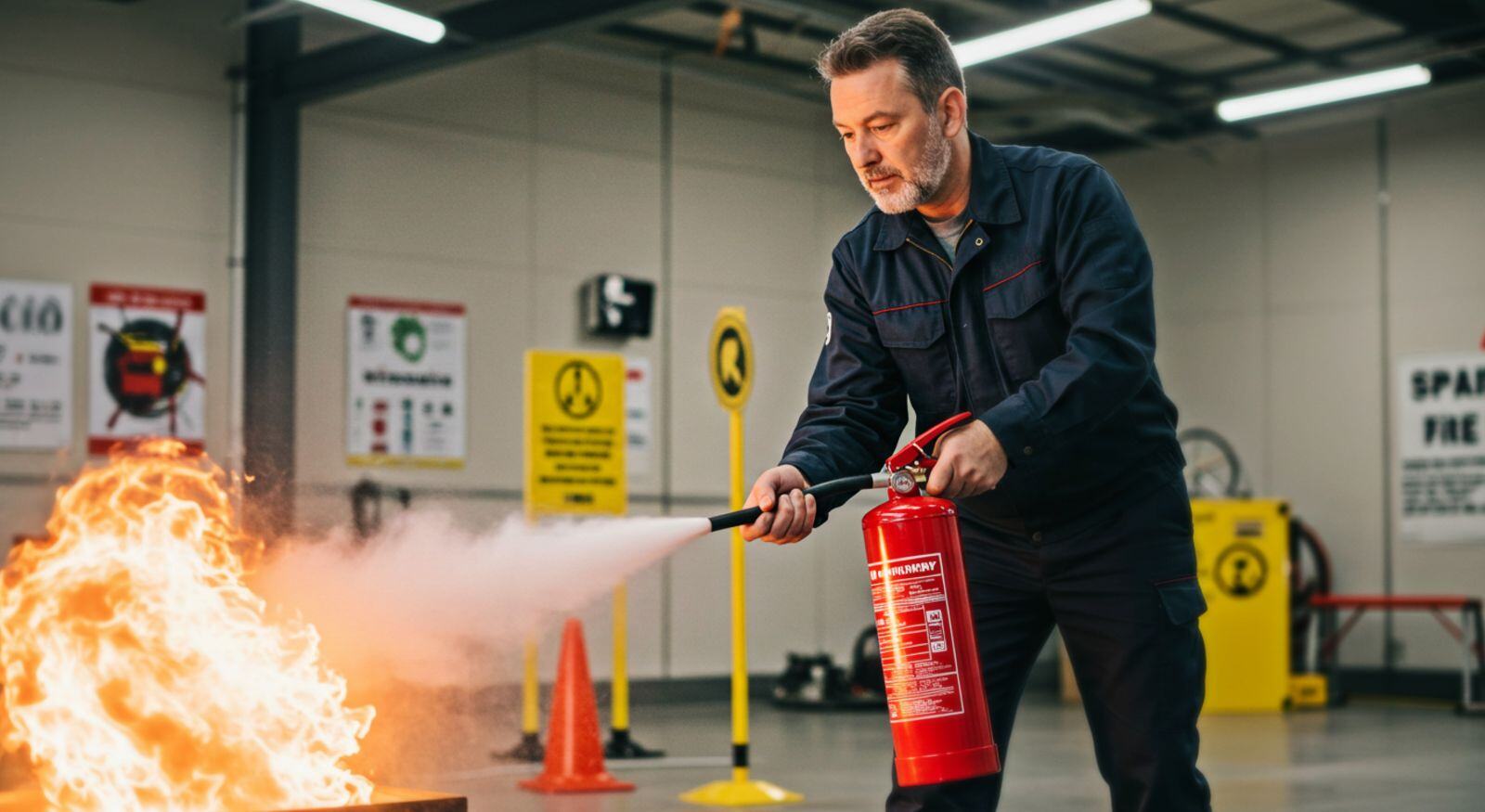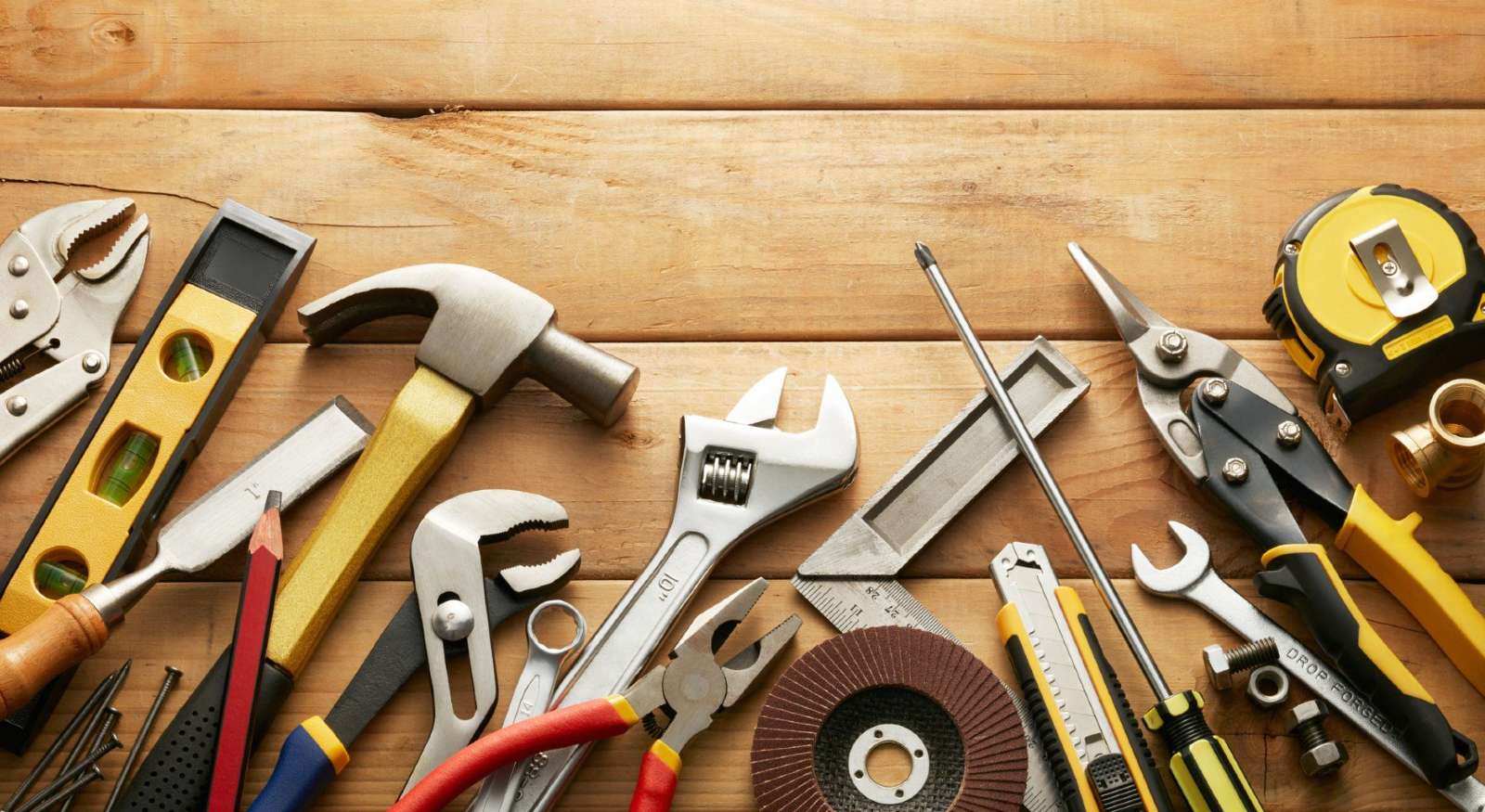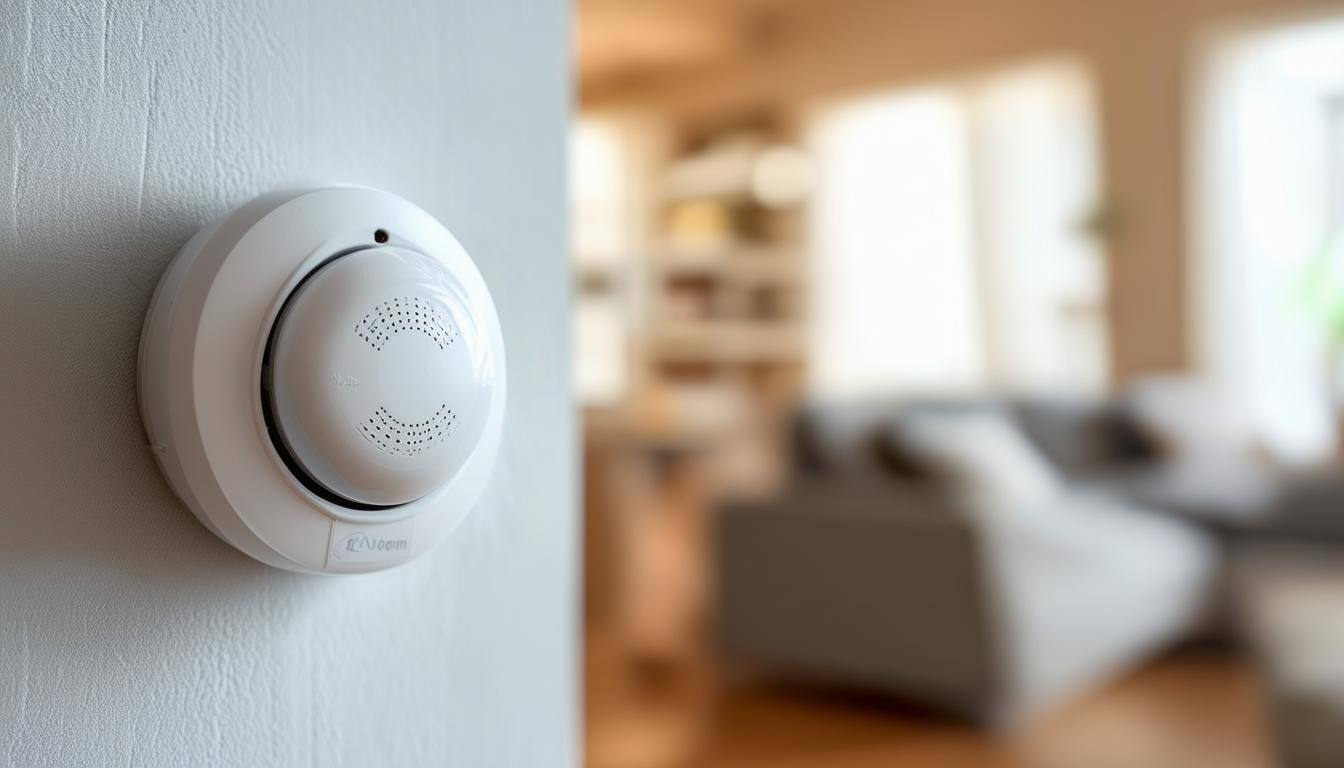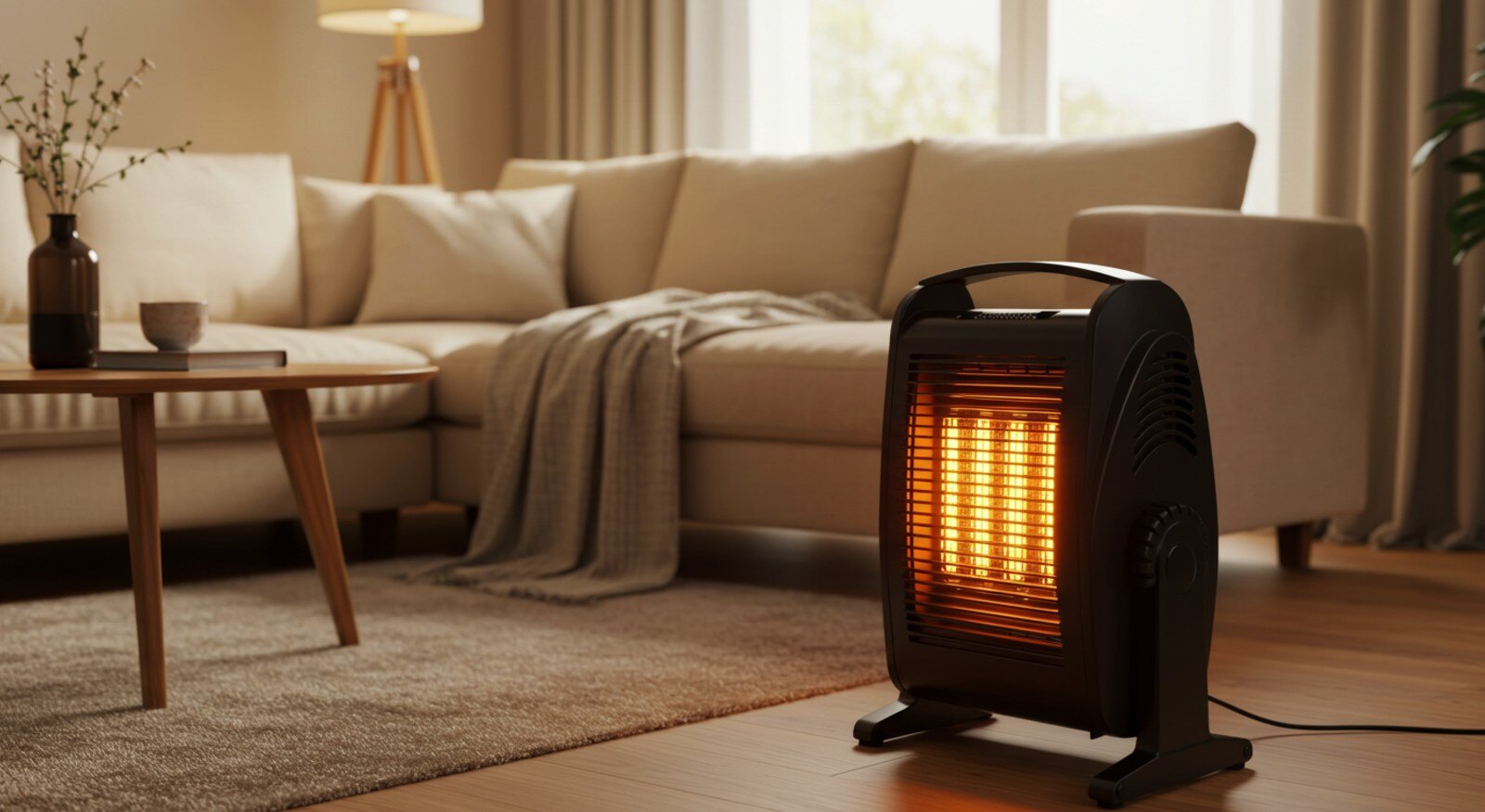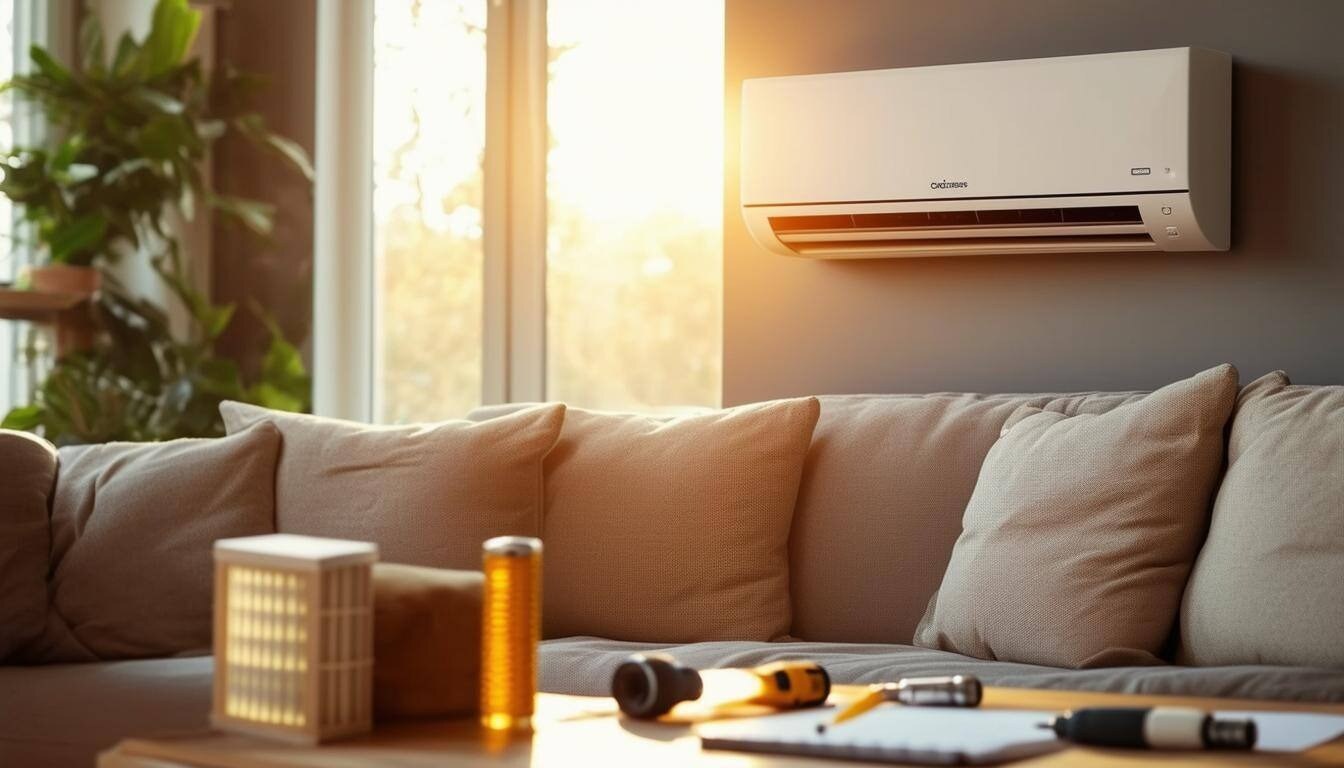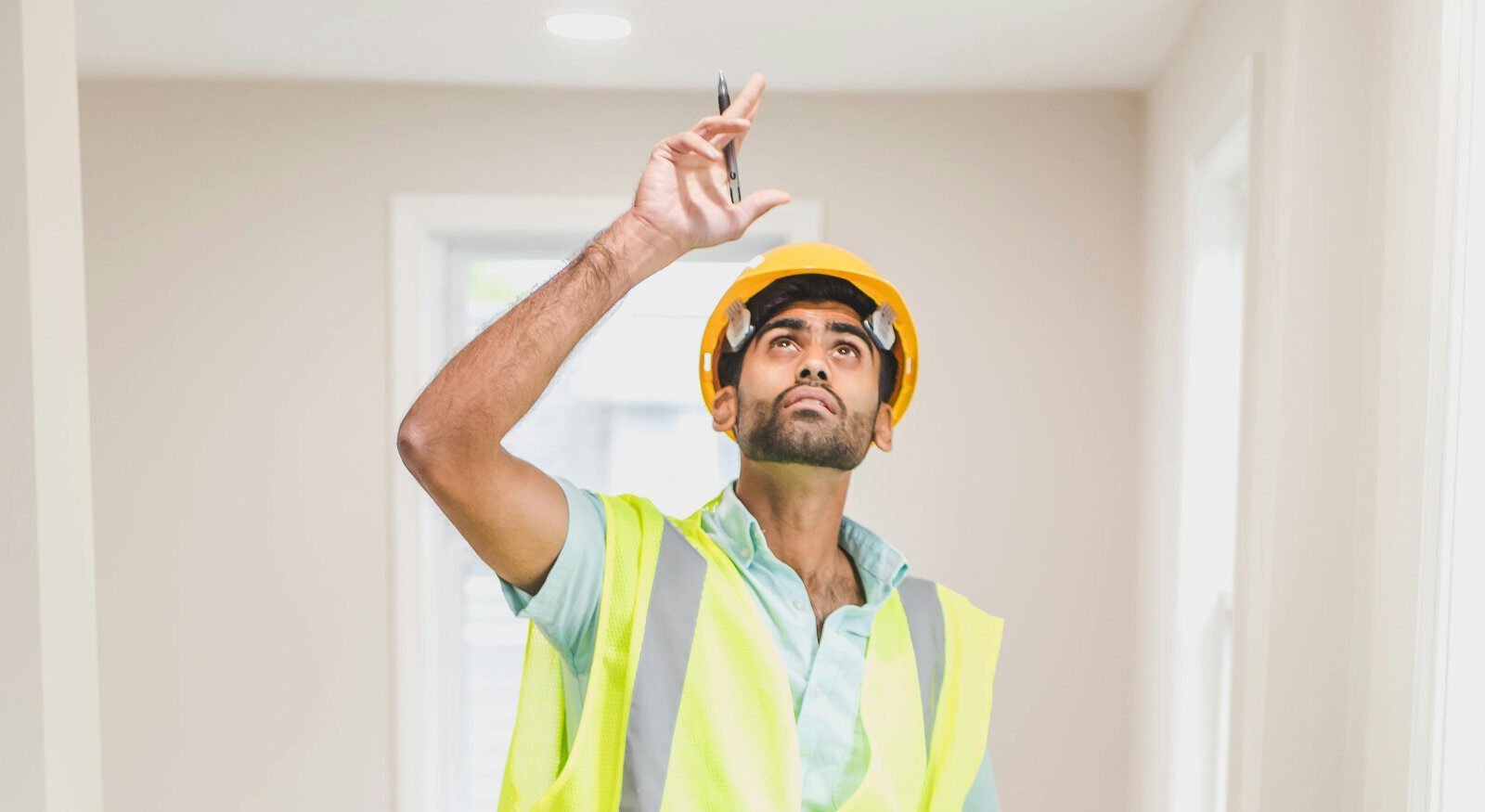7 Issues of Living in a Fire-Damaged Home (and Solutions!)
September 5th, 2025
4 min read
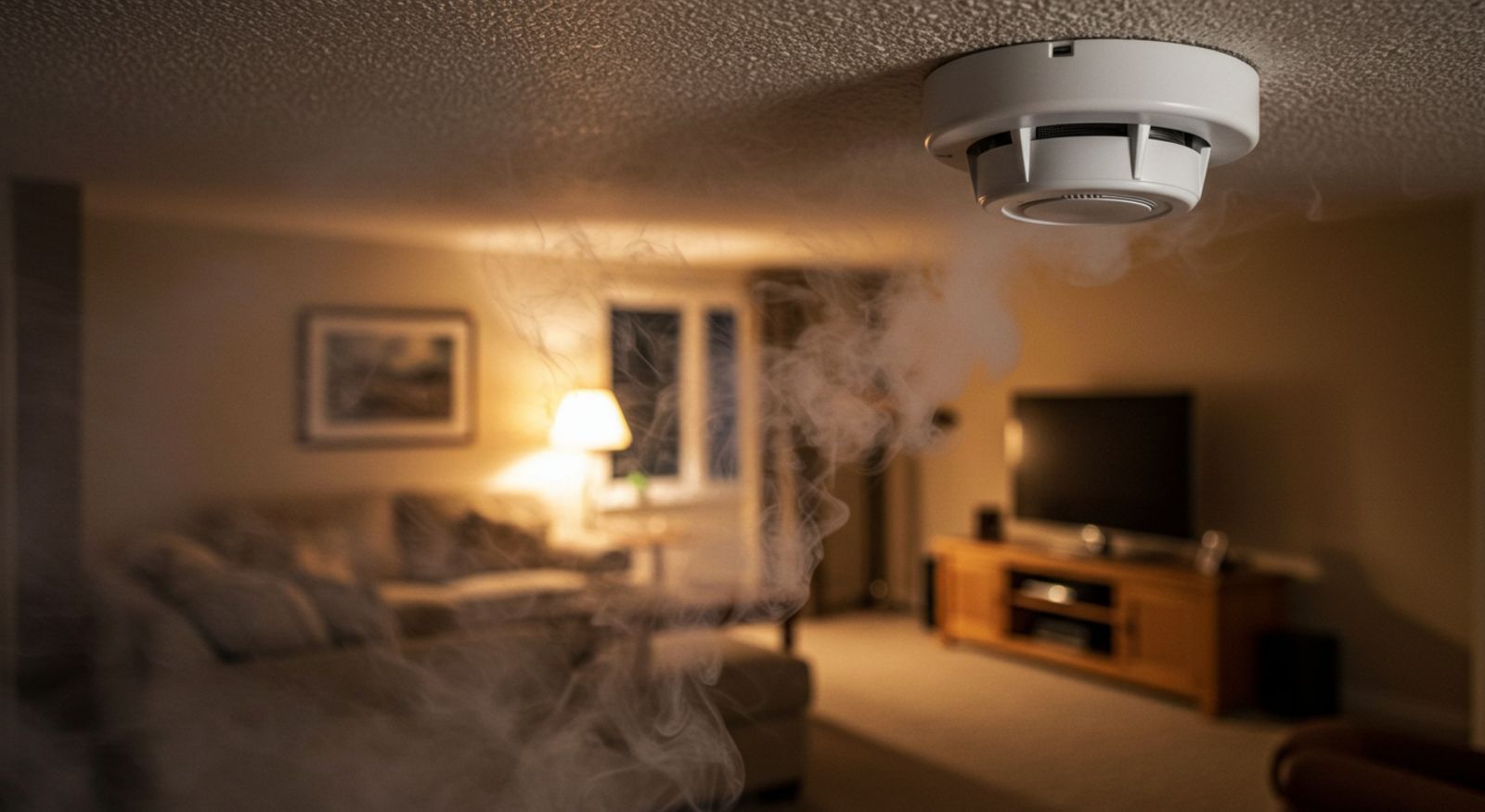
A fire breaks out in your home. You evacuate and leave the rest to your local Fire Department. It's a scenario most homeowners don't even want to imagine. Sadly, it's more common than people think and could happen to you. But once the fire has been put out, is it actually safe to return?
Even if your home was not completely destroyed, numerous problems and dangers lurk inside. Homeowners can face several issues, from immediate safety hazards to long-term health concerns.
As an IICRC-certified fire restoration company, Restore-It has seen its fair share of fires and the destruction they leave. This experience has taught us the best course of action when the worst happens.
Today, we will discuss the problems of living in a home affected by a fire and some solutions and recommendations for this scenario. Let's examine the key issues and learn how to face them together!
1. Air Quality and Health Risks
According to the National Fire Protection Association (NFPA), 1,389,000 fires were reported to the fire department in the United States for the year 2023. Fires are a major health hazard, as proven by the statistics: They were responsible for 3,670 civilian deaths and 13,350 civilian injuries. And yet, the health hazards don't stop there. The Federal Emergency Management Agency (FEMA) reminds us that soot and contaminated water can make you sick.
Smoke Inhalation
According to Dr. Baruch Fertel from the Cleveland Clinic, a nonprofit academic medical center based in Cleveland, Ohio, smoke mainly contains mostly carbon monoxide but also other toxic gases. This happens when synthetic materials commonly found in homes (like rubber, plastic, or foam) burn. The Cleveland Clinic warns that this mixture, combined, can cause several symptoms, which are listed below:
- Shortness of breath
- Hoarseness
- Chest pain
- Sore throat
- Cough
- Noisy breathing, like wheezing or stridor
- Headache
- Dizziness
- Confusion
- Fainting
- Seizures
More dangerous complications of smoke inhalation include: acute respiratory distress syndrome (ARDS), asphyxiation, coma, heart attack, methemoglobinemia, pneumonitis, pulmonary edema, and stroke. On the other hand, the people who are most at risk are people with chronic conditions (asthma, chronic kidney disease (CKD), chronic obstructive pulmonary disease (COPD), diabetes, and heart disease), pregnant women, and children.
Mold Growth
Water used to extinguish the fire can lead to high levels of humidity within walls, under floors, and in insulation, which can lead to indoor mold growth. Exposure to these damp and moldy environments can cause various health issues, warns the Centers for Disease Control and Prevention (CDC).
Mold can cause symptoms like a stuffy nose, sore throat, coughing, wheezing, burning eyes, or skin rash. People with asthma or mold allergies, compromised immune systems, or chronic lung diseases are more likely to experience a severe impact.
2. Structural Integrity Issues
Now that we have established how smoke, soot, and mold can harm your health, there is another victim to worry about after a fire: your home's structure.
First, even if your wooden bits ―like beams, trusses, floor joists, and even the walls― have not turned into charcoal, they can still be seriously weakened. This means there's a real risk that something could give way and collapse.
Then there's your roof. Whether the fire itself had a go at it or it was the water from firefighting efforts, there is bound to be damage. All that action can really rough up your shingles, underlayment, and other roofing materials. This can turn your roof into a leaky sieve, and when water gets in, it can lead to a whole new set of problems inside ―from damage to ceilings and walls to mold growth.
Last but not least, let's chat about the foundation—the very thing your whole house stands on! Now, damage here is generally less common from an average house fire, but it can still happen. For example, if the fire was super intense or a lot of water was used, it could mess with the foundation. While it's not the most frequent issue, any foundation concern is a big deal.
3. Utility System Damage
First, let's discuss the electrical system. Heat, soot, and water can damage wiring, outlets, and breakers. Using them could lead to electrocution or even another fire.
Next, the plumbing: pipes can melt, crack, or burst from the fire's heat. While freezing pipes aren't an immediate concern in El Dorado this May, any damage can mean leaks, causing more water damage, and contamination.
Finally, your HVAC system can also suffer after a fire. The unit itself might be damaged, but the real problem is often soot-filled ductwork. Turn it on, and you'll spread those nasty particles everywhere!
4. Hidden Damage
Once the flames are put out, hidden damage can lurk unseen within your home's walls, floors, and ceilings. Fire, smoke, soot, and water from firefighting efforts can compromise insulation, wiring, and plumbing concealed there.
Furthermore, water can saturate these hidden cavities and materials, leading to serious long-term issues like rot and dangerous mold growth (a particular concern with the humidity here in El Dorado!). If not professionally and thoroughly dried out, this can lead to a weakening of the home's structure.
5. Damage to Belongings
Smoke, soot, heat, and water can still ruin items that are not directly burned. Textiles, electronics, furniture, and porous items are particularly susceptible to contamination and odor absorption.
6. Psychological and Emotional Toll
One aspect rarely discussed about home fires is the emotional toll they can take on the occupants. Living in a space that has experienced a fire can be traumatic and stressful. Dealing with the cleanup, repairs, loss of belongings, and safety fears is no easy task.
7. Insurance and Financial Complexities
Navigating insurance claims, getting proper assessments, hiring contractors, and funding repairs (especially if underinsured) adds significant stress and financial burden.
Follow this Checklist and Prevent these Issues
No one should live in a fire-damaged home until it has been professionally assessed for safety, thoroughly cleaned, deodorized, and properly repaired by qualified restoration and construction professionals. Protect your health and safety by following these steps before attempting to live in your home:
☐ Prioritize Safety & Relocate: Immediately find safe temporary housing. Do not live in the house until it's professionally cleared. If you or your loved ones find any of the symptoms listed above, immediately visit a doctor.
☐ Contact Professionals and Your Insurance: Notify your insurance company right away. Also, hire a certified fire restoration company for assessment and cleanup.
☐ Get Expert Assessments: Have professionals evaluate structural integrity, air quality (soot, toxins, mold), and damage to electrical, plumbing, and HVAC systems.
☐ Undertake Professional Remediation: Hire specialists to perform thorough cleaning, soot/smoke removal, deodorization, mold remediation, and drying out of the structure.
☐ Ensure Professional Repairs: Hire licensed contractors for all structural repairs and to fix/certify electrical, plumbing, and HVAC systems before they are used.
☐ Manage Insurance & Documentation: Work closely with your insurer, understand your policy (especially Additional Living Expenses - ALE), and keep detailed records of everything.
☐ Address Belongings: Inventory damaged items for insurance. Consult professionals about specialized cleaning for salvageable items; discard heavily contaminated porous items.
☐ Seek Personal Support: Deal with the emotional stress by talking to counselors, support groups, family, or friends. Also, consider talking to a counselor or therapist experienced in trauma or loss. Some organizations, like the Red Cross, may also offer support services.
The Rundown: Trust the Professionals at Restore-It!
The bottom line is that it's best not to guess and get professional help when it comes to your home's essential systems. Having learned about the dangers that lurk in your home after a fire, you can now make the best choices to protect yourself and your loved ones. If you are looking for a trustworthy fire restoration partner, look no further and call Restore-It. We are ready to help you navigate this challenging situation, from when you pick up the phone to the final inspection of your restored property!
Topics:




